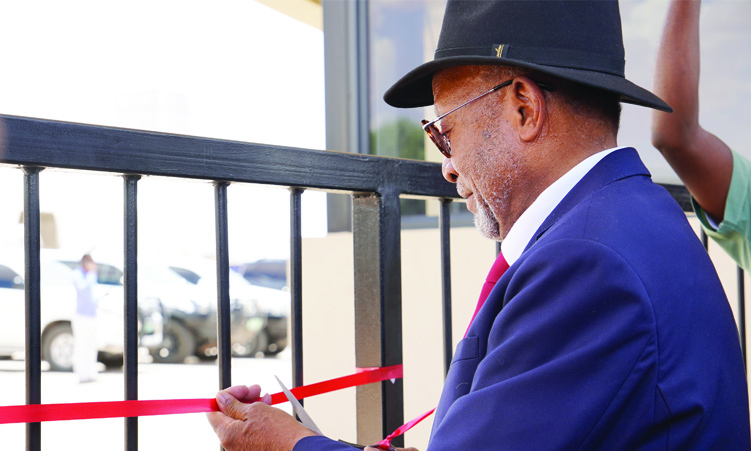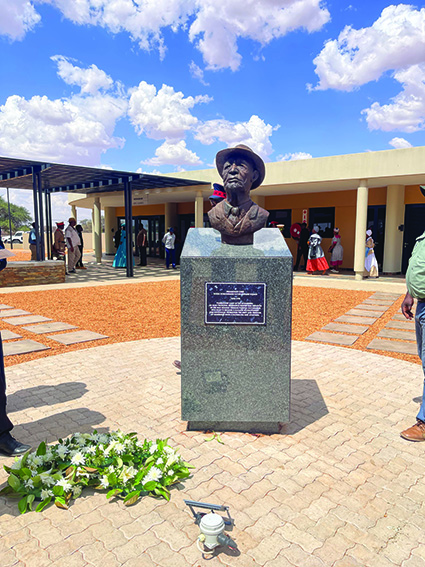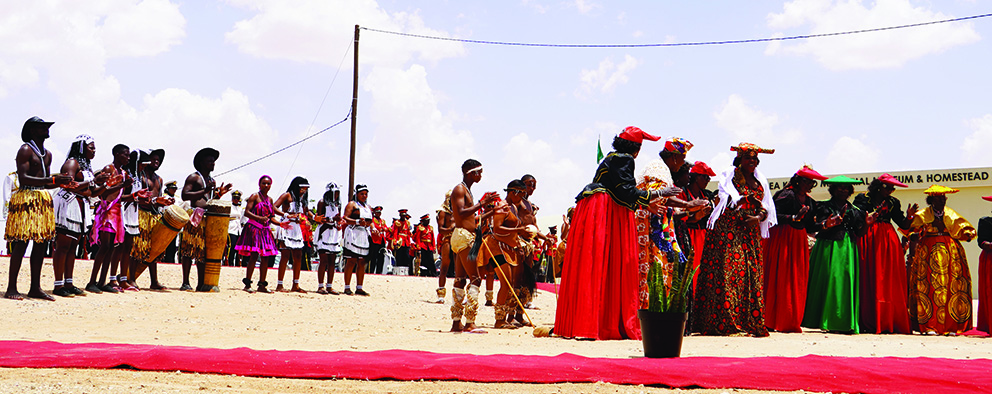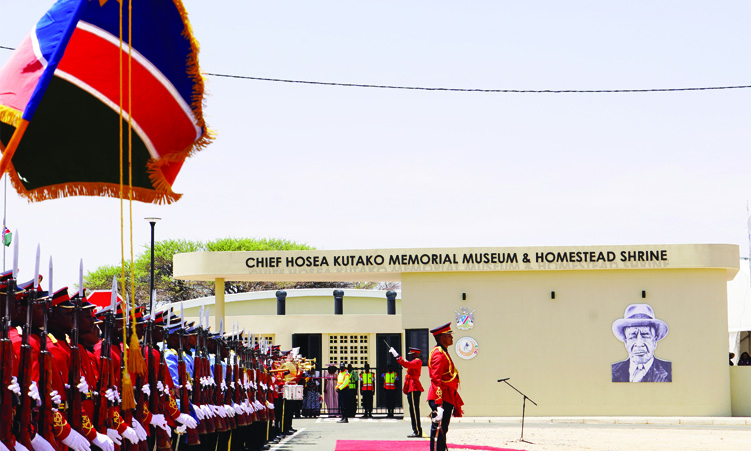Namibia recently transformed a remote village in the Omaheke region into sacred ground, as the nation gathered to commemorate the life and legacy of a man who dared to dream of a free Namibia.
The inauguration of the Hosea Kutako Memorial Museum and Homestead Shrine, held at Toasis in the Aminus constituency last Tuesday, marked a significant moment, honouring a leader who ignited the flame of Namibian independence.
The event commenced with a traditional ceremony at the holy fire, symbolising the spiritual and cultural grounding of the proceedings. This sacred ritual, deeply rooted in Namibian heritage, along with traditional Otjiherero chants, cultural performances and powerful poetry, further immersing attendees in the country’s cultural heritage.

Chief Hosea Kutako: A Unifier and a Visionary
Hosea Kutako (1870-1970) has often been described as a relentless advocate for freedom and a visionary leader. As the paramount chief of the Ovaherero people, he spearheaded resistance against German colonial rule and later, apartheid South Africa’s illegal occupation.
Chief Kutako’s diplomatic vision brought Namibia’s struggle to the forefront of global attention. Collaborating with Anglican reverend Michael Scott, he petitioned the United Nations (UN), garnering international support that ultimately paved the way for Namibia’s independence in 1990.
More than a political leader, Kutako was a cultural custodian. He safeguarded the traditions and identity of his people amid turbulent circumstances. Now referred to as one of the nine founding heroes of Namibia, his mentorship of freedom fighters, including Namibia’s first president, Sam Nujoma, cements his legacy as both a unifier and a man who shaped Namibia’s destiny.
Kutako’s fight against oppression transformed his homestead into a stronghold of resistance, a place where strategies for Namibia’s freedom were conceived and nurtured.
From the Hosea Kutako International Airport to a prominent road in Windhoek, and a statue that stands tall in front of the Namibian parliament, the memorial museum and homestead shrine serves as one of many tributes to his remarkable contributions to Namibia’s struggle for human rights. Kutako’s legacy extends beyond Namibia. His memory is kept alive at the UN headquarters in New York with a bust that honours his contributions to self-determination and human rights.

‘A Symbol of Resistance and Resilience for Namibia and Beyond’
Framed against the global significance of International Human Rights Day, this occasion illuminated Kutako’s legacy – a visionary who became a beacon of unity and perseverance in the face of hard times.
The inauguration was the culmination of years of dedicated efforts, initiated by late president Hage Geingob, who championed the renovation of the homestead into a national heritage site.
Speaking at the event, president Nangolo Mbumba highlighted the memorial’s alignment with global milestones: “Chief Kutako, a survivor of the first genocide of the 20th century, stands as a symbol of resistance and resilience for Namibia and beyond,” he said.
Mbumba further reflected on the significance of the site. “It (the site) represents the unity of the Namibian people, which carried them during the formidable, but victorious fight against racism, German colonialism and illegal apartheid occupation of our land,” he said.
“It represents the resilience of our struggle for independence to build a country that is united in diversity,” he added.
Visitors explored the museum’s exhibits, which feature historical photographs and the preserved structure of Kutako’s homestead, providing a window into the life of a leader whose actions defined a nation’s path.
The event also featured moving speeches from community leaders, with Ondangere Mungendje, patriarch of the Otji-Mungunda clan, describing Kutako as “a beacon of unity whose legacy continues to inspire generations”.
Similarly, Bethold Tjiundje, senior councillor of the Ovaherero Traditional Authority, emphasised the shrine’s importance as “a cornerstone for cultural tourism and national pride”.
The day’s events not only honoured a great leader but also reaffirmed Namibia’s commitment to its rich history and the pursuit of a brighter future.

Stay informed with The Namibian – your source for credible journalism. Get in-depth reporting and opinions for
only N$85 a month. Invest in journalism, invest in democracy –
Subscribe Now!










